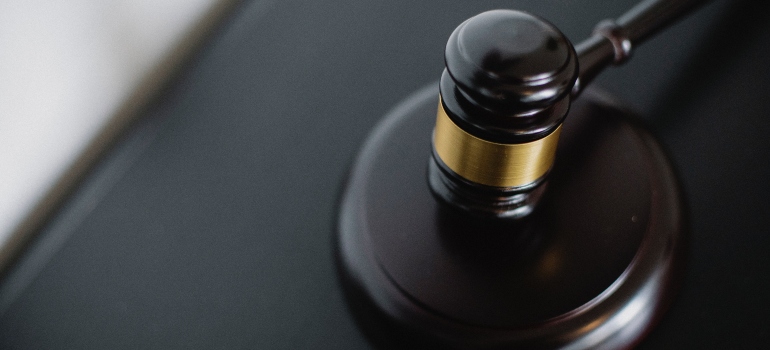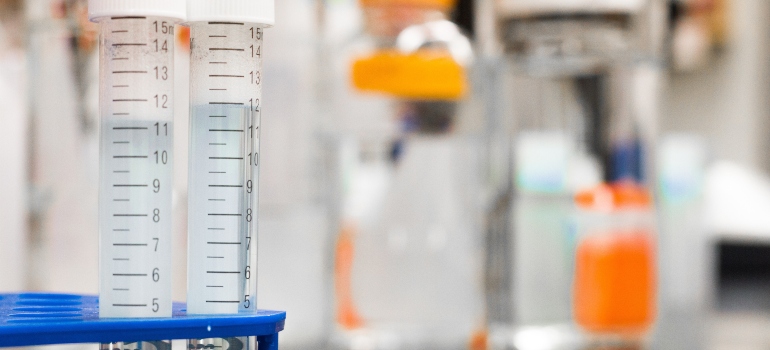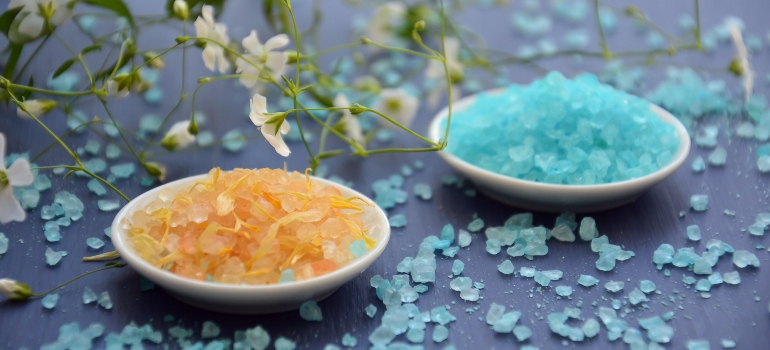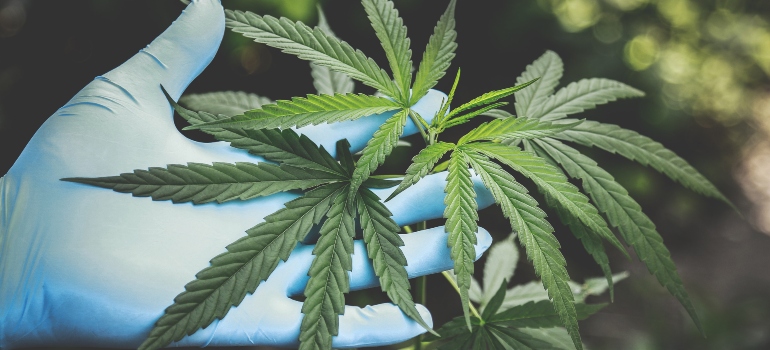The Difference Between Organic and Synthetic Drugs Explained
You may think that “drugs are drugs” and that there are not many differences between synthetic and organic drugs. The truth, however, is that there is a world of difference. Synthetic drugs are usually much more addictive than organic drugs, as they have been specially designed to be so. That said, getting addicted to either type can have serious consequences. Most people need to pay a visit to an addiction treatment center in Pennsylvania to manage their addiction. To make the right choices when it comes to dealing with the negative effects of these drugs, what you need is the difference between organic and synthetic drugs explained. In this article, we are going to provide you with an overview of both synthetic and organic drugs, the risks of their use, their interaction with the body, as well as point out the best treatment options.
Jump to Section
The difference between organic and synthetic drugs explained
The primary difference between organic and synthetic drugs is that the former is made in a lab while the latter is found in nature. Many synthetic drugs utilize organic chemicals but add other chemicals to enhance the effect or increase the chances of addiction. Some synthetic drugs, such as fentanyl, can be perfectly legal, as they are used for treating severe pain. And even those drugs have a high potential for abuse, as they provide a certain “high”. Abusing any synthetic drug for a certain timeframe will usually require a visit to one of the drug and alcohol treatment centers in Pennsylvania. Trying to get rid of drug addiction on your own can be extremely dangerous, regardless of whether you are addicted to an organic or a synthetic drug.

Overall, synthetic drugs are much more addictive and carry a higher risk of overdose than organic drugs. But to fully understand the difference between organic and synthetic drugs, we need to take a closer look at both types.
Synthetic drugs explained
Synthetic drugs are drugs that were “man-made”, instead of created from natural ingredients. Some of these drugs were originally developed by pharmaceutical companies for a variety of purposes but were then “scrapped” due to their highly addictive effects and potential for abuse. What happened after that is that other chemists took the formula, modified it slightly, and re-labeled them as research chemicals. And that led to the rise of synthetic drugs around the world.
Addiction to pretty much any synthetic drug is a serious concern. In most cases, the only option people addicted to these drugs have is to enroll in a medication assisted treatment Pennsylvania program. Since most synthetic drugs were specially designed to create a strong addiction, getting rid of the addiction is only possible through professional medical supervision. And the worst thing about today’s synthetic drugs is that many of them are perfectly legal. These “Designer” drugs can be particularly dangerous, as you can get access to them as simply as visiting a local store.
“Designer” Drugs
You may have heard about synthetic marijuana and bath salts. These two are the most common examples of what a designer drug is. A designer drug is basically an altered version of an illegal drug in an effort to make it legal. The government is constantly on the lookout for designer drugs and is stamping on them every single day. However, due to the sheer number of designer drugs that are flooding the market, this task is all but impossible. This is due to the fact that the creators of these drugs are very creative in their placement. Some drugs are classified as jewelry cleaners, herbal incense, bath salts, or even plant food. As you might imagine, figuring out a drug from the real thing gets complicated real fast.

Hard to regulate
Another thing that complicates the matter is the fact that many of the designer drugs in the USA originate from China. According to a DEA press release from 2014, there were between 200 and 300 designer drugs identified in the 2009-2014 period. And the situation is only worse today. What this means is that there is practically no way to regulate or research these drugs before they appear on the market. And there will always be people who are willing to take advantage of this fact. Unless you have the difference between organic and synthetic drugs explained to you, you might be at the mercy of unknown designer drugs.
But the fact of the matter is that all these drugs are out there, ready for consumption if you take some time to search for them. They are the reason why more and more people are enrolling in Pennsylvania opioid treatment programs each and every day. And to make matters even worse, people that are abusing these drugs have no idea what they might contain. That, in turn, means that there is no way to predict the risks of using synthetic drugs.
Risks of using synthetic drugs
Since synthetic drugs are produced in a laboratory somewhere, users simply cannot know what all the risks associated with their consumption are. Even though prescription drugs might carry similar risks, their production is supervised and the risks of abuse are commonly known. Take alcohol, for example, which is the perfect example of a legal drug. Alcohol consumption has been researched over and over again and it has been decided that it is “safe” for general use. And despite that, many people need to turn to some of the alcohol rehab centers Pennsylvania has to offer. Now imagine what can happen when there is virtually no research on the effects of certain synthetic drugs. Some synthetic drugs may even contain gasoline and numerous other extremely toxic ingredients, making them several degrees of magnitude more dangerous.
As you might imagine, the potential side effects of synthetic drugs are as varied as the drugs themselves. But the worst part is that you simply cannot know what you are taking when you take any synthetic drug.

Interaction between the body and synthetic drugs
Since synthetic drugs contain numerous “unidentified” chemicals, their interaction with the body simply cannot be predicted. In most cases, there can be significant differences between two different “batches” of the same drug. A prime example of this is synthetic marijuana. While the organic version of the drug is all but impossible to overdose on, the synthetic version (such as Spice or K2) presents a serious overdose risk. Another great example is cocaine, which is often mixed with other chemicals. The resulting mixture can have unpredictable side effects, due to the added chemicals. This is why cocaine addiction rehab is extremely dangerous to attempt on your own, as you simply cannot know what kind of chemicals you’ve ingested. Getting rid of cocaine addiction today requires numerous tests and analyses to ensure that you get proper medical attention.
Why do people abuse synthetic drugs?
You would think that the fact that synthetic drugs are so dangerous would make people less likely to abuse them. However, the problem lies in the “marketing” of these drugs. The people that sell them market their products like a “safe” high. And then there’s the fact that many designer drugs are specially made not to be picked up on standard drug tests. This makes them the drug of choice if you don’t want to get caught using it. And then there’s the fact that designer drugs are usually way stronger than their “original” counterparts. If you wanted the difference between organic and synthetic drugs explained, that is pretty much it.
Stronger than normal
For example, synthetic marijuana is hundreds of times stronger than organic marijuana. Even though a single gram sells for around $25, the fact that synthetic marijuana is so much stronger presents an enticing prospect to potential abusers. Furthermore, you used to be able to find synthetic marijuana pretty much anywhere. Today, it is much more difficult to obtain it legally, but it is not impossible. The process of obtaining synthetic cannabinoids is not unlike obtaining benzodiazepines, meaning that it is not something that is not accessible to pretty much everyone with enough determination. And, since some synthetic drugs have a similar effect, many people choose to “mask” their addiction and undergo benzo addiction treatment. Needless to say, this can be extremely dangerous. You should never undergo treatment for a different substance than the one you are using.

Then there’s also the fact that many synthetic drugs are virtually undetectable by “normal” means. For example, many synthetic drugs are practically odorless. This makes them extremely popular with teenagers and young adults who are looking to hide their drug abuse from their parents, peers, or friends.
Types of synthetic drugs
While there are literally hundreds of synthetic drugs on today’s market, some are more “famous” than others. Here are some of the most common synthetic drugs that are readily available today:
- Bath salts
- Synthetic opioids
- Synthetic marijuana
- Krokodil
- Molly
- Synthetic psychedelics
- Synthetic cocaine
Some of these drugs, such as Spice and K2, were originally thought to be perfectly legal. Others were derived from “traditional” drugs, such as heroin. Most of these drugs are extremely potent and may require a visit to one of the heroin rehab centers in Pennsylvania, due to them being extremely addictive. Let’s take a look at exactly what these drugs are, and why you might want to avoid them at all costs.
Bath salts
A rather inconspicuous name hides one of the most dangerous synthetic stimulants on the market. Bath salts are capable of producing a hallucinogenic effect, similar to one found in LSD. These drugs resemble their namesake and they are sold within small foil or plastic packages. Bath salts may also be sold as capsules or in liquid form inside small jars. There are many street names for the drug, such as Monkey Dust and Blue Silk. Treating a bath salts addiction requires at least partial hospitalization in one of the partial hospitalization programs Pennsylvania has on offer. More often than not, however, a full hospitalization is required.

Synthetic opioids
These are one of the most widely available drugs on today’s market. Synthetic opioids include variations of “traditional” opioids such as ketamine and fentanyl. If you need the difference between organic and synthetic drugs explained, the best thing is to look into synthetic opioids and organic opioids. These drugs are usually injected directly into the bloodstream but some of them can be sniffed or smoked instead. Due to so many synthetic opioid variations, side effects can be extremely unpredictable and severe. Treating an addiction to synthetic opioids usually requires people to enroll in an inpatient rehab Pennsylvania program. These opioids have many street names, including Vitamin K, Dragon’s Breath, Crazy One, and Dance Fever.
Synthetic marijuana
Synthetic marijuana can be found either in a liquid form or within small plastic bags. The stuff sold in bags resembles dried leaves. When initially introduced to the market, synthetic marijuana was marketed as both safe and legal to use. In reality, this is a highly addictive drug and is heavily regulated and almost impossible to obtain legally anymore.
Krokodil
This is one of the most dangerous drugs of today, as it can be mixed at home. The ingredients include codeine (the main ingredient of the drug), paint thinner, iodine, gasoline, and hydrochloric acid. Many sober living houses in PA are full of former krokodil addicts. Krokodil is often compared to heroin due to its high addictive potential and a very high lethality rate. This drug is even more lethal than heroin, however, and treating a krokodil addiction is extremely difficult.
Molly
You are most likely to encounter Molly when attending a music festival. This drug is a synthetic version of Ecstasy, a very popular drug among partygoers. It is so similar to Ecstasy that many clubs may offer it to users saying that it is Ecstasy that they are taking. Molly is much more dangerous than Ecstasy, however, as the creators usually lace it with other chemical compounds to make it more potent. Most people who suffer from a Molly addiction also deal with alcohol use disorder, as the drug is a “continuation” of alcohol abuse. The best thing to do is to undergo a DBT for alcohol use disorder alongside treatment for addiction to Molly. The drug also has other street names, such as MDMA, Lover’s Speed, Hug Drug, Biscuit, and Adam.
Synthetic psychedelics
These drugs are the synthetic form of the famous drug LSD. People usually refer to them as Smiles or N-bombs, and they are some of the most powerful hallucinogens on the market. One of the most potent variations is the 25l, which is also extremely addictive. Synthetic psychedelics usually come in powder or liquid form. There are numerous applications of these drugs, you can inject them, inhale them, or even use them as a suppository! If you need the difference between organic and synthetic drugs explained, it does not get more graphic than this! The reason why synthetic psychedelics are so popular is the fact that even a tiny amount can produce a “high” that lasts for more than twelve hours.
Treatment for synthetic psychedelics is usually both psychological and physical. While physical rehab helps with withdrawal symptoms, patients may need to undergo a CBT plan for substance abuse, as well. Some of the other street names include Sugar Cubes, Window Panes, Trips, and Tabs.
Synthetic cocaine
Synthetic cocaine is the prime example of a “designer drug”. The fact that it is legal in many countries means that it is easily accessible to the masses. If you wonder why “plant food” is so expensive, chances are that you are looking at synthetic cocaine in some shape or form. Some of the street names include Mind Melt and Mint Mania. Many countries are stepping up to remove synthetic cocaine from the market but it is still possible to find it legally. And with the global market being as it is, this means that anyone with enough determination can get their hands on it.
Organic drugs explained
Organic drugs come from nature itself. You can find these drugs naturally growing in deserts, fields, and forests. Some people also grow their own plants for recreational use, either legally or illegally. In general, organic drugs are somewhat less addictive than their synthetic counterparts. But that is not to say that some of them are not highly addictive. In fact, some organic drugs are more addictive than some synthetic drugs.

“Abusable” organic drugs
Most organic drugs come from plants. Here is the list of some of the most common plants that people use to make drugs:
- Opium poppy (codeine, heroin, morphine)
- Blue agave (tequilla)
- Coca leaves (cocaine)
- Ephedra sinica (meth, Sudafed)
- Psilocybin mushrooms
Organic drugs usually make the “base” for synthetic drugs. That is the reason why they are usually “safer” to use. If you consider using any drug to be safe, that is. The fact of the matter is that drugs have a negative impact on your body and mind. Suffering from drug addiction is a very serious problem, one that can take several years to get under control.
But how do exactly these plants become powerful drugs? Let’s find out!
Opium poppy
You might have already heard about “Milk of the poppy” from a very popular TV show. The plant, poppy, is one of the primary components of many opiates, such as morphine. When sliced in bud form, poppy produces a milky fluid (otherwise known as latex), which then becomes raw opium. People use this raw opium as their drug of choice or they mix it with other chemicals, producing more dangerous drugs. If you want the difference between organic and synthetic drugs explained, know that natural opium that comes from poppy is several times weaker than its synthetic counterpart.

Blue agave
One of the more interesting organic drugs comes from the Blue Agave plant. When you roast and mash the center of blue agave, you get sugar that leaves alcohol once it rots. You can then use this alcohol to create ethanol. The most famous product that stems from blue agave is tequila.
Coca leaves
Coca leaves, alongside marijuana are the most famous plant that produces an organic drug. On their own coca leaves produce a slight narcotic effect, as well as a feeling of calm and slight lightheadedness. They are not highly addictive in their natural form. However, the problem is that you can’t usually find them in their natural form. More often than not, you will find them as cocaine. The process of coca leaves turning into cocaine is quite disturbing, as it involves battery acid, gasoline, and powdered cement.
Ephedra sinica
Chances are that Ephedra sinica is completely unfamiliar to you. This is a plant that the Chinese have been using in their medicine for centuries. On its own, the plant produces slight narcotic effects. However, the alkaloids present in the plant are very easy to abuse and are one of the primary components in meth production. The plant itself is legal to own, however, as it is not a straightforward process to create an illegal drug from it.
Psilocybin mushrooms
‘Shrooms are one of the most common (mostly) legal organic drugs on today’s market. This is due to the fact that these mushrooms have a presence in numerous cultures as a medicinal drug. Psilocybin mushrooms also have a lower abuse potential than most other drugs. However, it is definitely possible to develop an addiction to them. Most of these mushrooms grow in the wild but can be undistinguishable from lethally poisonous mushrooms.
Available treatment for synthetic and organic drug addiction
Addiction to any drug, synthetic or organic, is a serious matter. Once you have the difference between organic and synthetic drugs explained to you, you will be able to choose the best treatment for your addiction. Most of the time, the best thing to do is to seek professional medical assistance. There are numerous treatment programs available, such as the 12 steps of recovery, or the family program at Little Creek Recovery Center. The best thing you can do is to choose a program that is suited to your particular addiction. You can choose from an inpatient program, where you will receive constant medical care and attention, or an outpatient program where you visit the rehab center for a couple of hours a day, a few days a week.